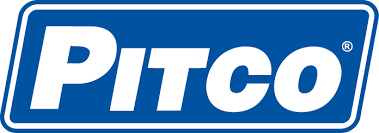How Kitchens Are Unknowingly Losing Money Because of Fryer Oil

Running a profitable kitchen requires more than great food. It demands control over every cost. But fryer oil is one of the most overlooked sources of waste. Many operators still change oil based on habit, not data, which leads to unnecessary spending, labor strain, and inconsistent results. Without smart oil management, kitchens could be losing thousands a year without even realizing it.
This problem often hides in plain sight. When food quality dips or staff complain about cleaning the fryer again, oil management is rarely the first solution people look at. However, how oil is managed has a direct impact on margins, team efficiency, and guest satisfaction. And if filtration is not used regularly or oil is evaluated based on a calendar instead of quality, a kitchen could be bleeding profit with every batch of fries.
What Shortens the Life of Fryer Oil
Oil that should last several days often breaks down much sooner. That’s because three factors are working against operators every time the fryer runs: light, water, and sediment. While these cannot be avoided entirely, understanding their effect is key to managing oil costs.
Light, especially from overhead fixtures in busy kitchens, causes oil to oxidize faster. Water, whether from frozen ingredients or excess rinsing, reacts with hot oil and reduces its lifespan. And sediment, often from breaded or battered menu items, builds up quickly if fryers are not filtered and cleaned consistently.
Menu mix matters, too. Frozen fries might be light on oil contamination, but bone-in wings, hand-breaded proteins, and starchy vegetables break down oil much faster. Knowing which items affect oil the most is essential to creating an oil management plan that actually saves money.
Good Filtration Makes Oil Last Longer and Reduces Waste
Here is where a small daily habit makes a massive difference. Routine filtration, combined with cleaning fry vats and training staff on best practices, can extend the life of fryer oil by days or even weeks. For high-volume kitchens, that means fewer drums purchased, less frequent changeouts, and a better back-of-house workflow.
Pitco fryers are designed with oil management in mind. From easy filtration systems to design features to manage the effects of frying high sediment products, these units are designed to stretch the oil dollar further. Pitco offers a range of Smart Solstice additions to keep your oil clean and your products tasting great, even in high volume establishments. But the equipment is just the start. Kitchens that prioritize oil maintenance as a daily ritual tend to see better consistency, lower waste, and happier teams.
Oil savings also support larger business goals. Using fewer drums is good for sustainability. Longer oil life means fewer interruptions in the kitchen. And better-tasting food from cleaner oil can drive repeat business. The impact goes well beyond the monthly invoice.
Measure Fryer Oil Costs and Find the Fix
Want to know exactly how much can be saved with better fryer oil filtration? Pitco’s free Oil Cost Calculator can provide the answer online in less than a minute. It’s as simple as providing current fryer oil habits, along with an estimated savings that might be provided. The results offer a clear picture of where profit is slipping away and how small changes in oil management can deliver returns. For operators looking to take control of costs without compromising quality, this is the first step to smarter operations.
Topics
- Foods & Trends (92)
- Fryers (89)
- Oil (58)
- Fried Food (54)
- Filtration (32)
- See All Topics

